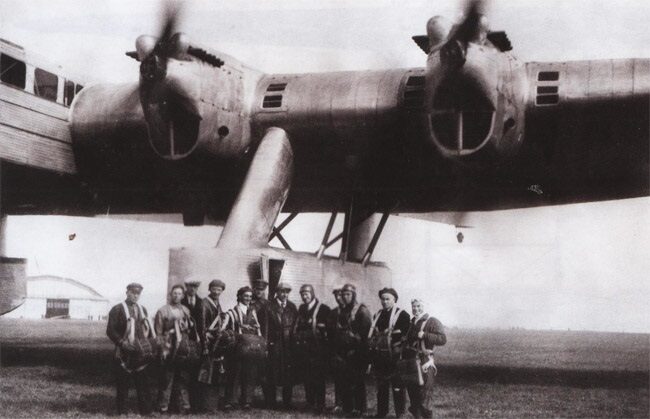
Weapons 04/02/20 K-7: secret of the catastrophe of the first Soviet aircraft giant
the Idea of gigantism tightly seized the minds of the Soviet designers of the prewar time. The pursuit of grandiose size was evident in everything from architecture to military industry. In the early 1930s became the “projects”, most of them remained unclaimed. Multi-purpose aircraft K-7, nicknamed the flying fortress, was an ambitious but unrealized project of the Soviet aviation industry.
Flying wing
Soviet aircraft designer K. A. Kalinin was one of the first who saw the prospect of the layout of the aircraft type “flying wing”. Aircraft of this design had a fuselage — its functions are performed by the core wing that carries all the necessary equipment, crew and payload. The advantage of this layout is the ability to reduce the weight of the aircraft and increase the payload.
In the diaries of the second half of the 1920s, Kalinin wrote: “for the creation of big new roads lead to new schemes of aircraft, towards the wing to accommodate cargo. This means that the way to flying wing, which is the perfect plane.”
In 1928 the scheme was tested in a wind tunnel and confirmed its viability. A year later, the designer has fully designed the project, which was approved by management and KB Kalinin engaged in the implementation of the idea. In the early 1930s, work on the construction of the aircraft giant with a wingspan more than 50 m started.
the History and fate of development
Full technical documentation and a full-scale model was ready by 1932, nine months later built the first experimental model. Already in the process floated a lot of difficulties associated with disabilities of Soviet industry, the plane was too heavy, and the engine (even at the final stage of the project, their number and brought to 7) — not as powerful as I would like.
the rest of the car was excellent, especially the military option. Eight guns and many machine guns did not leave dead spots around the aircraft every sector of the surrounding space was exposed to fire from at least three firing points. Bomb load was 6 so Instead, the plane could carry a tank or other armored vehicles dropped by parachute.
Tests showed that the machine has good flight characteristics. Here’s what he wrote one of the first test — pilot M. A. Snegirev, “the Car is in the air well obeyed rudders. Control it was easy. I do not believe. Slightly pull the steering wheel and the car immediately responds!”. Unfortunately, a second flight was less successful. 21 ноября1933 year coming in to land, the plane crashed, killing 15 crew members.
the cause of the accident was the destruction of the longerons of the tail boom caused by vibration related to risklevel of the aircraft. The last quality common to all machines of type “a flying wing”. At that time, to fight this could not, and materials that can withstand the vibration of a Soviet aircraft was not.
In 1935, was made the decision to change the concept of Soviet aircraft. Work on the K-7 turned. Kalinin himself unjustly became a victim of the “great terror” in 1938 was shot.
Yaroslav Gorbunov
Source:
© Russian Seven
Recommended statesalaska… Share: Comments Comments on the article “K-7: secret of the catastrophe of the first Soviet aircraft giant” Please log in to leave a comment! br>
Share on Tumblr
















